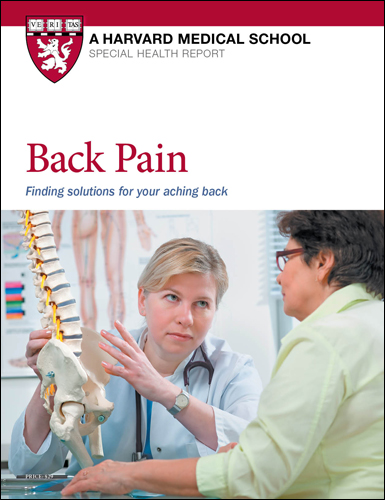Taming the pain of sciatica: For most people, time heals and less is more

Sciatica refers to pain caused by the sciatic nerve that carries messages from the brain down the spinal cord to the legs. The pain of sciatica typically radiates down one side from the lower back into the leg, often below the knee. The most common cause is a bulging ("herniated") disc in the lower back. Discs are tire-like structures that sit between the bones of the spine. If the outer rim of the disc tears, usually due to routine pressure on the lower back, the jelly-like inner material can come out and pinch or inflame the nearby nerve. Sciatica is most common in people 30 to 50.
How do you know if it is sciatica?
The key to diagnosing sciatica is a thorough history and a focused exam. Sciatica symptoms are often worse with sitting or coughing and may be accompanied by numbness or tingling in the leg. A physical exam can confirm that the sciatic nerve is involved. If there is muscle weakness or diminished reflexes in the involved leg, an imaging test such as a back MRI can be useful and help guide a decision for early surgery.
Treating sciatica pain… and managing expectations
Many people think (understandably) that the worse the pain, the more likely something bad is going on. However, this isn't true for sciatica. The body can reabsorb the disc material that is causing symptoms, even for those with severe pain. So, treatment focuses on controlling pain and keeping people as active as possible.
If the pain is excruciating, lying down for short periods can help, but prolonged bed rest does not. So, once the pain becomes manageable, it's important to get up and start walking short distances. Since sitting increases pressure on the discs in the lower back, avoid prolonged sitting or driving. Many people try treatments like physical therapy, massage, acupuncture, and chiropractic manipulation, but evidence suggests that while these approaches may help typical low back pain, they are less helpful for sciatica. Over-the-counter pain medicines like ibuprofen and naproxen can help. When they don't, short-term use of stronger, prescription pain medicines may be needed.
The good news is that for most (roughly three out of four) people, symptoms improve over a few weeks. For those not improving after six weeks, surgery is an option. We know surgery can speed up recovery, but by six to 12 months people who have surgery are usually doing about as well as those who decide to just give the body more time to heal on its own. Surgery involves removing the disc material that is affecting the nerve. It is generally a very safe procedure, and while complications are rare, they can happen. What's more, 5% to 10% of people who have surgery will not be helped by it or may have worse pain afterwards.
Patients often ask about spinal injections — where steroid medicine is injected into the affected area. It is worth considering for those with uncontrolled pain or for those with persistent, bothersome symptoms who want to avoid surgery. Injections can provide short-term sciatica relief. Like any procedure, it has uncommon risks including more pain, and it doesn't seem to decrease the need for future surgery.
Sources
Herniated lumbar intervertebral disk. New England Journal of Medicine, May 2016.
Evaluating and managing acute low back pain in the primary care setting. Journal of General Internal Medicine, February 2001.
Epidural corticosteroid injections for radiculopathy and spinal stenosis. Annals of Internal Medicine, September 2015.
Adapted from a Harvard Health Blog post by Steven J. Atlas, MD, MPH
About the Author

Steven J. Atlas, MD, MPH, Contributor
Disclaimer:
As a service to our readers, Harvard Health Publishing provides access to our library of archived content. Please note the date of last review or update on all articles.
No content on this site, regardless of date, should ever be used as a substitute for direct medical advice from your doctor or other qualified clinician.
















